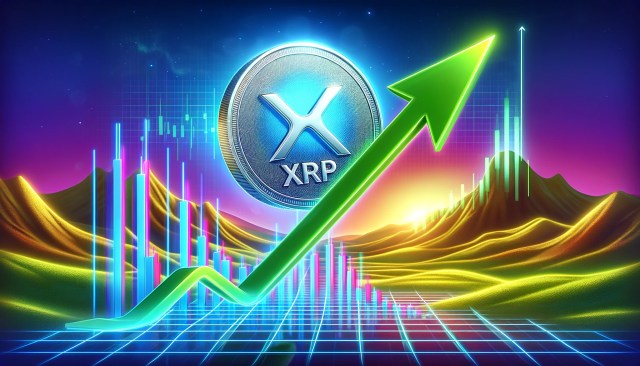Bitcoin’s (BTC) relief rally has seen it rise 21% above the Aug. 5 bottom of $49,577. The recovery has also been witnessed across the broader crypto market, with the total market valuation reclaiming the $2 trillion level, up 20.5% since Aug. 5.
Market participants are now looking for clues on whether the crypto market has bottomed and begun the early stages of a trend reversal.
Uncertainty could drop after the September FOMC meeting
Some analysts believe that investors are holding onto their positions until the Federal Reserve decides on interest rate cuts during the next FOMC meeting scheduled for Sept. 18.
Although it is widely expected that the Fed will reduce interest rates to between 5% and 5.25%, there is considerable uncertainty regarding the health of the US economy.
Fed target rate probabilities for Sept. 18. Source: CME Group
On Sept. 12, the US Consumer Price Index (CPI) print revealed a slowdown in inflation on a year-over-year basis, while the Sept. 12 Producer Price Index (PPI) print for August showed a month-on-month increase. Additionally, the unemployment numbers came in hot at 230,750 versus the expected 227,000.
Since the Fed’s rate hikes throughout 2023, interest expenses on the deficit have risen by 23% in the first half of 2024. The central bank maintains they need to see more “good” inflation data indicating inflation is on a sustainable path to the Fed’s 2% goal before they can consider cutting interest rates.
In his dovish remarks in late August Fed Chair Jerome Powell affirmed that the time has come for the Federal Reserve to cut its key policy rate.
A key indication that the crypto market price correction may be reaching a bottom stems from the traditional markets. Expectations of improving macroeconomic conditions have made investors more speculative. The Russell 2000 Index, which tracks mid- and small-cap US-listed companies, rose by 4.3% over the last seven days. The S&P 500 index is also up 3.56% over the last week.
Emotional capitulation signals market bottom
Extreme fear usually signals market bottoms as investors become more cautious about holding assets with an increased preference for fiat or stablecoins.
Experienced traders prefer to buy when sentiment indicators like Alternative.me’s Crypto Fear & Greed Index signal extreme fear and scale back exposure when the index signals greed.
According to the metric, extreme fear can be a sign that investors are too worried. However, it could provide a buying opportunity as capital rotates from weak hands.
The current market sentiment is “fear,” with the index hovering at 32, up from the below-20 readings early in August, which reflected “extreme fear.”
Crypto Fear and Greed Index readings below 20 indicate extreme fear. Source: Alternative.me
“Extreme fear” readings have mostly coincided with peak selling in the past.
Data market intelligence firm Santiment reveals a significant shift in crowd sentiment over the last week as the “ratio of positive comments more than doubles the number of negative comments” for the first time in 12 months.
“Bitcoin’s positive sentiment suddenly surges to 1-year high, Ethereum’s more modest due to Vitalik concerns.”BTC and ETH positive vs. negative social media sentiment. Source: Santiment
The onchain data provider, however, warns that such a sudden shift in crown optimism is concerning as “prices traditionally top when this level of FOMO is present.”
“Look for traders to "slow their roll" and start to express FUD again. When the crowd begins conveying doubt again, BTC will truly begin testing its March all-time high market values.”
Related: MicroStrategy adds 18,300 Bitcoin, now holds $14.14B worth of BTC
Bitcoin miner capitulation
Bitcoin miners are expanding their operations as the network’s hashrate reached a fresh all-time high earlier this month following a capitulation event, according to data from onchain analysis firm CryptoQuant.
Bitcoin’s network hashrate hit a new record high of 742 exahashes per second (EH/s) on Sept. 1, recovering from the 10% drawdown in early July. Such expansion follows recent drops in Bitcoin prices and record-low hash price – or the average revenue per amount of mining power. This is an indication of positive sentiment among miners after a streak of selling over the last few months.
Bitcoin hashrate. Source: CryptoQuant
Hashrate refers to the sum total computing power used to secure and verify new transactions on the Bitcoin network. Millions of calculations are solved each second to ‘win’ new blocks, a process broadly called mining.
As the network hashrate increases, so does the cost to mine Bitcoin as miners are forced to upgrade to more powerful mining rigs, expand operations, and use more energy to remain competitive.
Similarly, Bitcoin mining difficulty also reached it’s all-time high as shown in the chart below.
Bitcoin mining difficulty. Source: CryptoQuant
Increased hashrate and the corresponding high difficulty rate continue to plague miner revenue. August 2024 represented the worst month for miner profitability since September 2023, as major mining companies faced revenue squeeze from multiple sources.
These lowered revenue and high costs are driving mining companies to consider several options to bolster revenue and remain in business, while others opt to wind down their operations. This leads to a phenomenon known as miner capitulation, which is typically seen near local bottoms for Bitcoin prices during bull markets.
This article does not contain investment advice or recommendations. Every investment and trading move involves risk, and readers should conduct their own research when making a decision.










